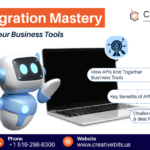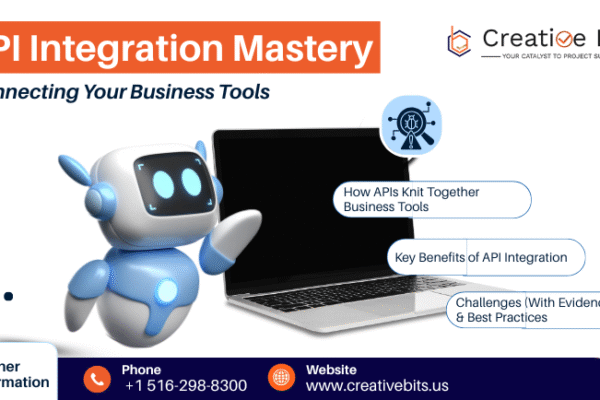Table of Contents
- Introduction: Why Workflow Automation Matters
- The Neuroscience Behind Context Switching
- The Financial Impact on Businesses
- How Workflow Automation Changes the Equation
- The Deep Work Dividend
- Implementing Workflow Automation Successfully
- Conclusion: Redefining Productivity
Why Workflow Automation Matters {#introduction}
Workflow automation has become the secret weapon for teams looking to reclaim lost productivity and eliminate the hidden costs of context switching. Every leader hopes to have teams that work quickly, but often companies inadvertently slow things down by overwhelming employees with fragmented tasks and constant app-switching.
Studies in psychology reveal that the human brain isn't designed for multitasking—it excels at focused, singular attention. Every transition from writing a proposal to answering a Slack message, or from researching customer data to creating reports, exacts a cognitive toll. This loss is called context-switching cost, and it's silently destroying your team's productivity.
According to the American Psychological Association, task-switching can reduce productive time by up to 40 percent. The brain requires several minutes to recalibrate after each focus shift. What appears to be efficient multitasking is actually an accumulation of micro-delays in cognitive processing, leading to hours of lost productivity each week.
The Neuroscience Behind Context Switching {#neuroscience}
Understanding Your Brain's Limited Resources
Neuroscience research demonstrates that focus operates as a finite resource. Each task switch triggers a mental reset that temporarily depletes working memory and attention capacity. A groundbreaking study from the University of California, Irvine discovered that interrupted workers need approximately 23 minutes to return to their original concentration level.
This cognitive ping-pong also triggers cortisol release, elevating stress levels and diminishing both accuracy and creativity. The impact of workflow automation becomes clear when you understand these neurological constraints.

Digital Overload and Tool Fatigue
In modern digital workplaces, context switching often manifests as tool fatigue. Knowledge workers juggle between 9 and 12 different software applications daily, creating constant micro-interruptions through alerts, pings, and notifications.
The 2023 Anatomy of Work Report by Asana revealed that 58 percent of employees spend more time switching between apps than performing meaningful work. This is where workflow automation becomes transformative—by connecting these disparate tools into a unified system.
The Financial Impact on Businesses {#financial-impact}
Calculating the Real Cost
The consequences extend far beyond neuroscience—they directly impact your bottom line. Excessive task-switching translates into lost time, which converts directly to decreased output. Harvard Business Review reports that excessive task-switching costs companies nearly $10,000 per employee annually in lost productivity.
For a 100-person team, that's a million dollars vanishing each year, hidden within daily operations. But the true cost goes deeper than time loss.
The Innovation Opportunity Cost
Beyond immediate productivity losses lies the opportunity cost. Deep work—sustained, distraction-free focus on cognitively demanding tasks—drives innovation. When employees can't achieve flow states due to constant interruptions, companies forfeit their creative and innovative potential. Workflow automation addresses this by creating uninterrupted work blocks.
How Workflow Automation Changes the Equation {#automation-solution}
Beyond Simple Task Reduction
Workflow automation transcends simple click reduction—it restores focus itself. By connecting tools and automating routine processes, companies eliminate constant task-switching needs. Information flows seamlessly between systems, the approval process is automatic, and updates are centralized in unified dashboards.
This enables workers to maintain deep engagement with meaningful work for extended periods. The impact of workflow automation on productivity is measurable and significant.
Measurable Productivity Gains
Zapier's 2024 Automation Index demonstrates that companies implementing workflow automation experience an average 23 percent increase in productive time per employee within six months (Zapier, 2024). Additionally, McKinsey found that automated task routing reduces context-switching by 40 percent, recovering nearly a full day of productive work weekly.
These aren't incremental improvements—they're transformative gains that workflow automation delivers consistently.
The Deep Work Dividend {#deep-work}
Maximizing Cognitive Performance
When workflow automation handles low-value tasks, employees reclaim cognitive resources for deep focus. Just 90 minutes of deep work can generate twice the output of hours spent shallow multitasking.
Neuroscientist Dr. Cal Newport (2024) explains that uninterrupted focus enables peak cognitive performance—pattern recognition, creativity, and strategic decision-making flourish. Workflow automation doesn't just improve task completion; it optimizes brain function for superior outcomes.
Creating Flow States Through Automation
Workflow automation creates the conditions for flow states—those periods of effortless concentration where your best work emerges. By eliminating interruptions and streamlining processes, automation enables sustained focus periods that were previously impossible in fragmented work environments.
Implementing Workflow Automation Successfully {#implementation}
Strategic Integration Approaches
Successful workflow automation requires strategic planning. Start by identifying your most frequent context switches and repetitive tasks. Map out your current tool ecosystem and identify integration opportunities. Focus on automating:
- Data synchronization between platforms
- Approval workflows and notifications
- Report generation and distribution
- Task assignment and routing
- Status updates and progress tracking
Platform Selection and Setup
Choose workflow automation platforms that integrate with your existing tools. Popular options include Zapier, Make (formerly Integromat), and platform-specific solutions like monday.com automations.
At Creative Bits, we specialize in designing automation systems that connect your tools, streamline collaboration, and minimize disruptions. We create integrated workflows within platforms like monday.com to help teams eliminate unnecessary task-switching and reclaim time for creative thinking.
Redefining Productivity {#conclusion}
Productivity isn't about doing more; it's about doing better. The hidden cost of context switching has silently eroded organizational efficiency, but workflow automation offers a neuroscience-backed solution with proven results. The future belongs to teams that leverage technology not to rush through more tasks—but to maintain focus on what truly matters.
Workflow automation represents more than a technological upgrade—it's a fundamental shift in how we approach work. By eliminating the cognitive tax of constant task-switching, automation enables teams to operate at their full potential, driving innovation and delivering exceptional results.
If your team is ready to transition from busywork to deep work, contact us at Creative Bits. Let's implement workflow automation that eliminates distractions and helps your team reclaim their focus. The 23% productivity gain from workflow automation isn't just a statistic—it's time your team could be investing in breakthrough innovation and strategic growth.

 monday.com Services
monday.com Services





